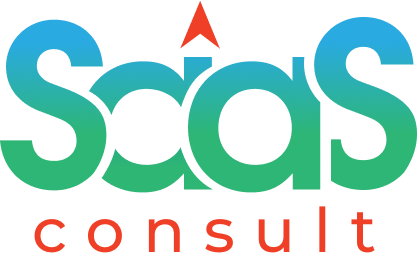Social media has transformed the marketing landscape, providing businesses with powerful platforms to connect with their target audience, build brand awareness, and drive conversions. Performance marketing, with its focus on measurable results, finds a perfect ally in social media. In this comprehensive guide, we will explore how to effectively leverage social media for performance marketing to achieve business goals and maximize ROI.
1. Understand Your Target Audience
The first step in leveraging social media for performance marketing is understanding your target audience. Analyze demographics, interests, behaviors, and pain points of your potential customers. Different social media platforms attract diverse user demographics, so tailor your strategies accordingly.
Social media platforms provide invaluable insights into audience behavior through analytics tools. Utilize these analytics to gain a deeper understanding of your audience’s preferences, content engagement patterns, and platform usage habits. Armed with this data, you can tailor your content to resonate better with your audience, making your performance marketing efforts more effective.
2. Set Clear Performance Goals
Clearly define your performance goals. Are you aiming for lead generation, website traffic, app downloads, or product sales? Set specific, measurable, achievable, relevant, and time-bound (SMART) goals to track your success and allocate resources effectively.
For instance, if your goal is lead generation, define the number of leads you aim to generate within a specific time frame. With measurable goals in place, you can track the performance of each social media campaign, identify what works best, and optimize future efforts accordingly.
3. Choose the Right Social Media Platforms
Not all social media platforms are suitable for every business. Select platforms where your target audience is active. Facebook, with its extensive user base and versatile ad formats, is a staple for many businesses. Instagram’s visual appeal makes it ideal for brands in fashion, beauty, and lifestyle. LinkedIn caters to a more professional audience, making it suitable for B2B companies.
Conduct research and analyze your target audience’s platform preferences and behaviors to identify the best fit for your performance marketing efforts. A well-defined social media strategy that aligns with your target audience’s preferences will yield better results.
4. Create Engaging Content
Compelling content is the cornerstone of effective performance marketing on social media. Develop content that aligns with your brand and resonates with your audience. Use a mix of visuals, videos, infographics, and written posts to keep your audience engaged.
Diversify your content to maintain freshness and avoid monotony. Share educational content, entertaining posts, user-generated content, behind-the-scenes glimpses, and customer success stories. Encourage interaction through polls, quizzes, and Q&A sessions to foster a sense of community.
5. Utilize Influencer Marketing
Influencer marketing is a potent strategy for performance marketing on social media. Collaborate with influencers relevant to your industry to expand your reach and drive authentic engagement. Ensure the influencer’s audience aligns with your target demographic.
When choosing influencers, consider factors such as their follower count, engagement rate, and authenticity. Micro-influencers, with smaller but highly engaged audiences, can be a cost-effective option for many businesses.
Remember that successful influencer marketing goes beyond one-off partnerships. Establish long-term relationships with influencers who align with your brand’s values and create content that seamlessly integrates with your overall social media strategy.
6. Implement Social Media Advertising
Social media advertising offers precise targeting options to reach the right audience. Utilize sponsored posts, paid ads, and retargeting campaigns to drive traffic, conversions, and lead generation. Monitor performance metrics to optimize ad spend.
Facebook Ads Manager, for instance, allows you to target specific demographics, interests, and behaviors. You can create lookalike audiences to target users similar to your existing customers, maximizing your campaign’s reach.
Twitter Ads, LinkedIn Ads, and Instagram Ads also provide robust advertising platforms with varied targeting capabilities. Be sure to test different ad formats and content to identify what resonates best with your audience.
7. Leverage User-Generated Content (UGC)
UGC fosters trust and authenticity. Encourage customers to share their experiences and opinions about your brand. Repurpose UGC in your social media posts to showcase real customer interactions and build social proof.
Brands like Starbucks, GoPro, and Coca-Cola have successfully harnessed the power of UGC to strengthen their brand identity and engage their audiences. Consider running UGC campaigns or contests to incentivize users to create and share content related to your brand.
8. Engage with Your Audience
Social media is a two-way communication channel. Engage with your audience by responding to comments, messages, and mentions promptly. Address feedback, queries, and concerns to build strong relationships.
Social media provides a unique opportunity to humanize your brand and create a personable connection with your audience. A timely and authentic response to customer queries or complaints can turn dissatisfied customers into brand advocates.
9. Run Contests and Giveaways
Contests and giveaways are excellent tools for boosting engagement and expanding your reach. Offer enticing prizes and encourage participants to share the contest, enhancing virality.
When running contests, ensure they align with your brand’s objectives and resonate with your target audience. Whether it’s a photo contest, caption contest, or sweepstakes, make participation easy and shareable to maximize visibility.
10. Track and Analyze Performance
To gauge the success of your social media performance marketing efforts, track relevant metrics such as click-through rates, conversion rates, engagement rates, and return on ad spend (ROAS). Use insights to refine strategies and optimize future campaigns.
Most social media platforms offer built-in analytics tools, providing real-time data on campaign performance. Tools like Google Analytics can also help track website traffic and conversions from social media.
11. Utilize Shoppable Posts
On platforms like Instagram and Facebook, leverage shoppable posts to allow users to make purchases directly from your social media profiles. This streamlined shopping experience increases conversion potential.
Shoppable posts enable users to explore your products or services and complete the purchase journey without leaving the platform. Be sure to optimize product descriptions, pricing, and visual appeal to encourage conversions.
12. Create FOMO (Fear of Missing Out)
Tap into the fear of missing out (FOMO) phenomenon by offering limited-time promotions, exclusive offers, or flash sales. Urgency can drive immediate actions and conversions.
FOMO is a powerful psychological trigger that compels users to act quickly to avoid missing out on valuable opportunities. Utilize countdown timers, limited stock announcements, or time-bound discounts to create a sense of urgency.
13. Conduct A/B Testing
Experiment with different ad formats, content styles, and calls-to-action (CTAs) through A/B testing. This iterative approach will help you discover what resonates most with your audience and improves performance.
A/B testing allows you to make data-driven decisions, ensuring that your social media campaigns are optimized for maximum impact. Test different headlines, visuals, ad copy, and landing pages to uncover the winning combination.
14. Optimize Posting Schedules
Identify the best times to post on each platform based on your audience’s activity. Social media algorithms prioritize recent content, so timing your posts strategically enhances visibility.
Use social media analytics to understand when your audience is most active. Experiment with posting at different times and days to find the optimal posting schedule for maximum engagement.
15. Monitor Competitors
Keep an eye on your competitors’ social media strategies. Understand what works well for them and learn from their successes and mistakes.
Social media competitive analysis can provide valuable insights into industry trends, audience preferences, and effective strategies. Identify gaps in their approach and capitalize on untapped opportunities.
16. Embrace Social Listening
Social listening involves monitoring conversations about your brand and industry on social media. Gain valuable insights into customer sentiments, trends, and pain points to refine your marketing efforts.
By actively listening to your audience, you can respond to feedback, address concerns, and adapt your marketing strategies to meet changing customer needs.
17. Personalize Your Approach
Segment your audience and tailor content to cater to specific demographics. Personalization increases engagement and conversion rates.
Consider creating buyer personas to understand your audience better. Craft personalized content that speaks directly to the unique needs and preferences of each segment.
18. Partner with Other Brands
Collaborate with complementary brands for cross-promotional campaigns. Pooling resources can expand your audience reach and drive mutual benefits.
Choose partners whose values and offerings align with your brand to ensure a cohesive and meaningful collaboration. Joint campaigns and partnerships can introduce your brand to new audiences and create a buzz around your offerings.
19. Utilize Retargeting Ads
Implement retargeting ads to re-engage users who visited your website but didn’t convert. Remind them of your offerings and encourage them to complete the desired action.
Retargeting is an effective strategy to bring back potential customers who have shown interest in your brand. Use dynamic retargeting to show personalized ads based on users’ browsing behavior.
20. Monitor and Adapt
Social media and performance marketing are dynamic landscapes . Continuously monitor performance, adapt to changes, and stay ahead of trends to maintain a competitive edge.
Regularly review your social media analytics to identify trends, patterns, and areas for improvement. Stay informed about platform updates, algorithm changes, and new social media features to optimize your strategies.
Leveraging social media for performance marketing is a potent strategy for businesses seeking tangible results. By understanding your audience, setting clear goals, selecting the right platforms, creating compelling content, and utilizing advertising, influencer marketing, UGC, and more, you can build a strong brand presence, drive conversions, and achieve your performance marketing objectives.
Embrace experimentation, analysis, and optimization to continually improve your social media performance marketing efforts and stay ahead in the ever-evolving digital landscape. With a well-crafted and data-driven approach, social media can become a powerful tool in your performance marketing toolkit, delivering measurable results and sustainable growth for your business.

